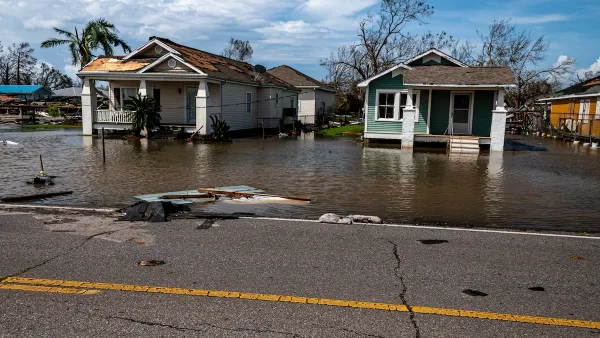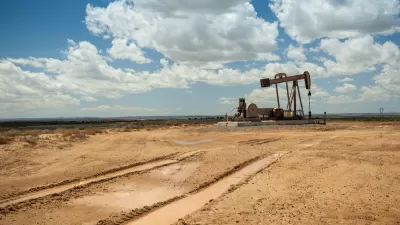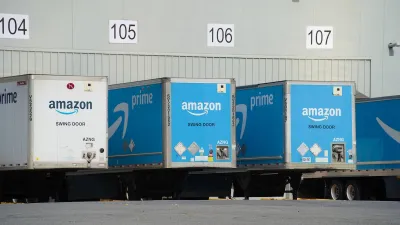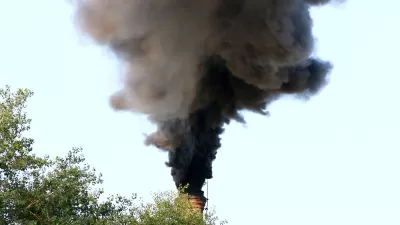With a 32 percent increase in natural gas drilling in the Marcellus Shale in Pennsylvania, it is no surprise that emissions are increasing as well, particularly sulfur dioxide. However, the increase was dwarfed by decreases from the power sector.
The energy industry is experiencing a remarkable transition. As of April 2015, for the first time in history, more electricity is now generated from burning natural gas than coal, and with that transition, emissions are changing as well.
Because natural gas is so much cleaner than coal, "total carbon emissions of the transportation sector is now greater than the carbon emissions of energy utilities," notes a post in June. At the same time, carbon emissions from all sources of burning natural gas now exceed those of coal, increased methane emissions from natural gas are becoming a greater source of concern for regulation.
Now thanks to Reid R. Frazier, who covers Marcellus shale and energy for The Allegheny Front, a public radio program covering environmental issues in Western Pennsylvania, we get to see how increased drilling for natural gas is affecting pollution levels in Pennsylvania. Yet increases in pollution need to be weighed against decreased emissions from the power sector as coal plants close.
According to new data released by the Pennsylvania Department of Environmental Protection (DEP), emissions were up in almost every major category, though some pollutants saw higher increases than others.
The emissions that saw the biggest spikes were sulfur dioxide (SO2), which increased 40 percent from 2013; and volatile organic compounds (VOCs), which saw a 25 percent jump.
Sulfur dioxide emissions can form particulate matter, which is associated with heart attacks and lung diseases. And VOCs are a crucial ingredient in the formation of ozone, which can exacerbate asthma and other lung problems.
As serious as these increases are to public health, they need to be weighed against massive changes that are being undertaken in electricity generation as utilities shift from more polluting coal to cleaner natural gas. Take Pennsylvania for example:
According to the DEP, sulfur dioxide emissions in Pennsylvania’s utility sector have dropped by 55,000 tons, or 17 percent since 2011. By contrast, shale gas sulfur dioxide emissions only increased by 141 tons, to 263 tons, over that timespan.
In other words, the increase in shale gas sulfur dioxide emissions amount to less than half of one percent of the decrease from the utility sector since 2011 resulting largely from the closing of coal plants.
Scientific American explained the dramatic decreases in criteria pollutants accompanying changes the power sector that vastly outweigh the increases from expanded natural gas production.
Gas-fired plants emitted 7 percent the nitrogen oxides and 0.2 percent of the sulfur dioxide of coal burners.., largely because nitrogen oxides can be more efficiently controlled in a gas plant and sulfur content is very low in natural gas.
Methane emissions decrease
"Between 2012 and 2014, emissions from methane, which is the main component of natural gas, decreased by 12 percent," reports Frazier. "DEP says one reason is that companies have become more aware of the environmental and economic consequences of methane escaping into the atmosphere.
Coming ethane cracker
Frazier narrated a story on Friday morning for National Public Radio on the ethane cracker that will be built 30 miles west of Pittsburgh in Beaver County. "An ethane cracker takes ethane, a component of natural gas found in abundance in the Marcellus shale, and processes it—or ‘cracks’ it—into ethylene," Reid explains in a 2012 FAQ on the facility.
Ethylene is the most commonly produced petrochemical. It is the root chemical for a kingdom of plastics, resins, adhesives and synthetic products used in virtually every aspect of modern life. It’s used as the basis for plastics like beverage containers, food wrap, polyvinyl chloride (PVC), polyester, and chemicals like those found in antifreeze, solvents, urethanes and pharmaceuticals.
"A lot of [ethane] just gets burned as fuel instead of getting used to make chemicals," states Frazier for NPR. "So basically, that ethane has been wasted here."
FULL STORY: Natural Gas Emissions In Pennsylvania Are Up. Here’s Why

Planetizen Federal Action Tracker
A weekly monitor of how Trump’s orders and actions are impacting planners and planning in America.

Vehicle-related Deaths Drop 29% in Richmond, VA
The seventh year of the city's Vision Zero strategy also cut the number of people killed in alcohol-related crashes by half.

As Trump Phases Out FEMA, Is It Time to Flee the Floodplains?
With less federal funding available for disaster relief efforts, the need to relocate at-risk communities is more urgent than ever.

Texas Safety Advocates Raise Alarm in Advance of Tesla Robotaxi Launch
The company plans to deploy self-driving taxis in Austin with no oversight from state or local transportation agencies.

How to Fund SF’s Muni Without Cutting Service
Three solutions for bridging the San Francisco transit agency’s budget gap without reducing service for transit-dependent riders.

Austin Tests Self-Driving Bus
Autonomous buses could improve bus yard operations for electric fleets, according to CapMetro.
Urban Design for Planners 1: Software Tools
This six-course series explores essential urban design concepts using open source software and equips planners with the tools they need to participate fully in the urban design process.
Planning for Universal Design
Learn the tools for implementing Universal Design in planning regulations.
Borough of Carlisle
Smith Gee Studio
City of Camden Redevelopment Agency
City of Astoria
Transportation Research & Education Center (TREC) at Portland State University
City of Camden Redevelopment Agency
Municipality of Princeton (NJ)





























